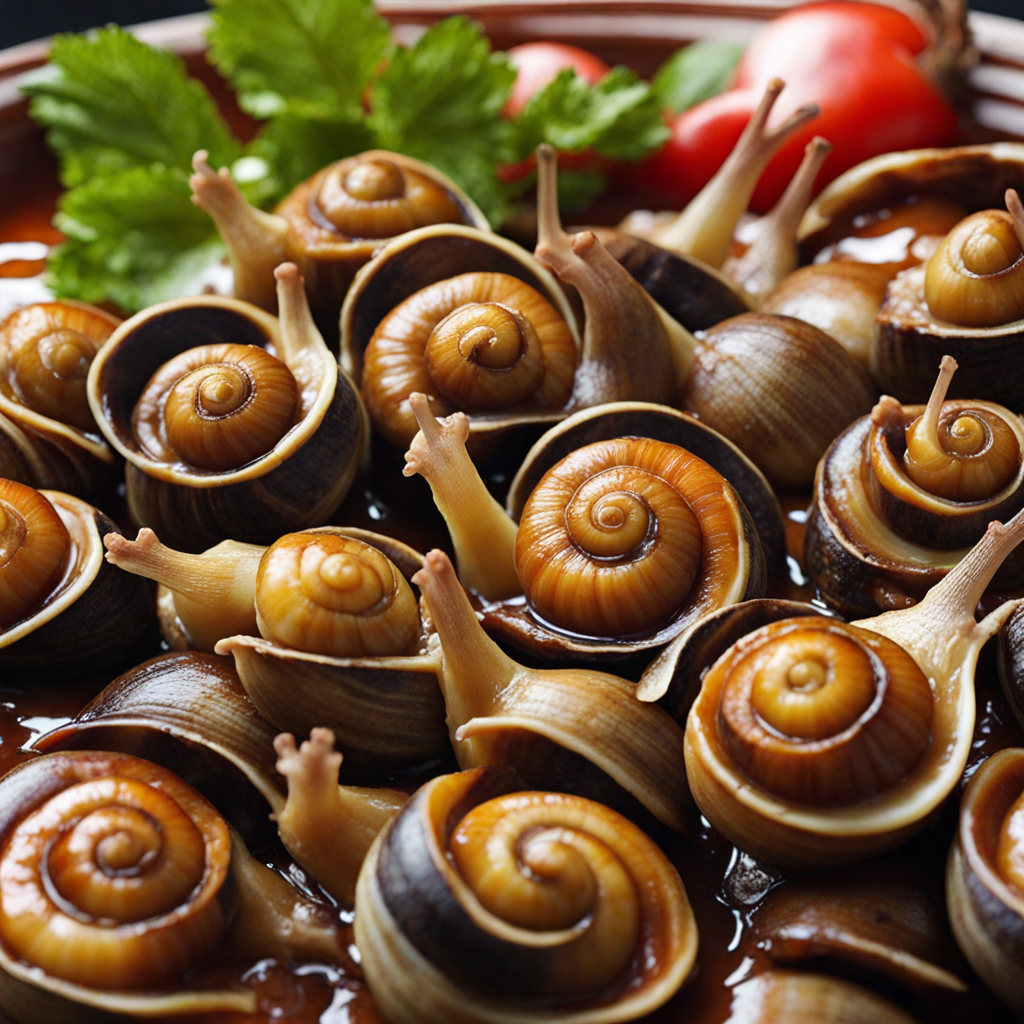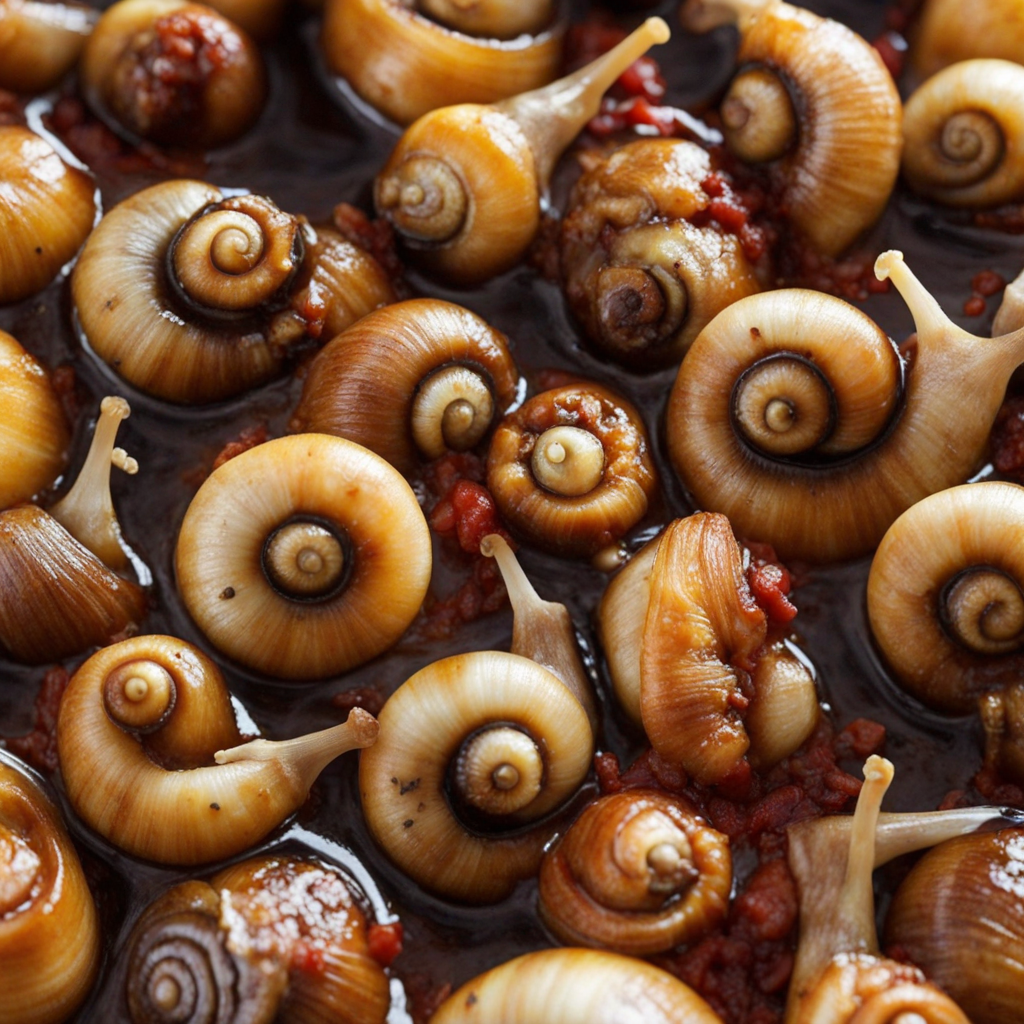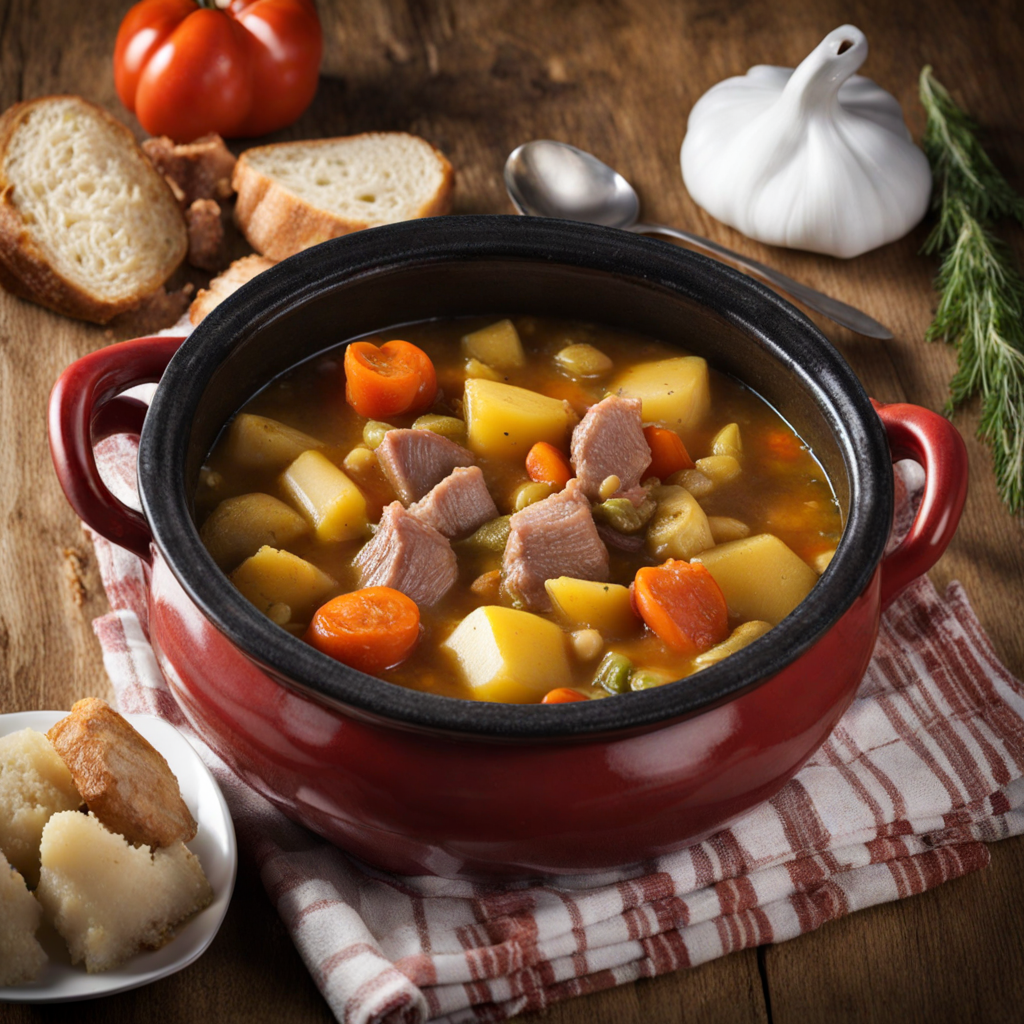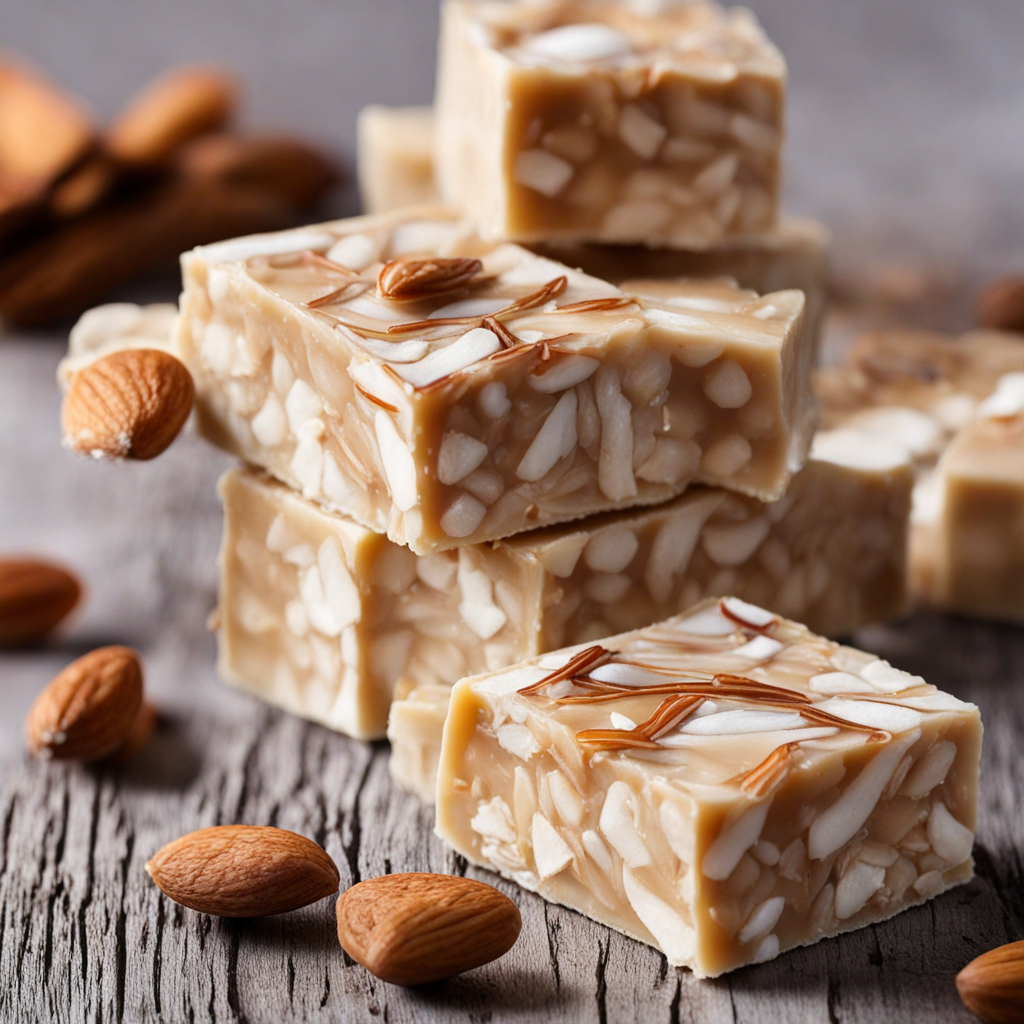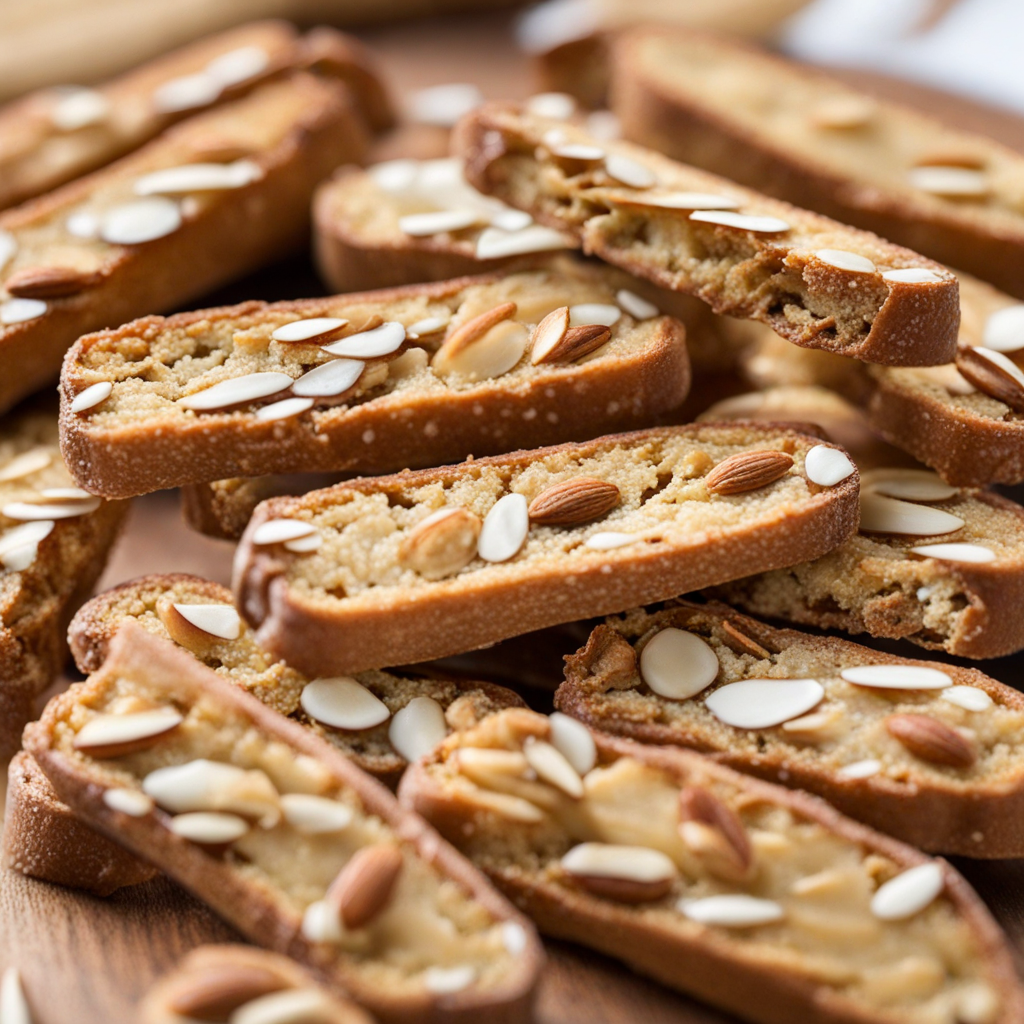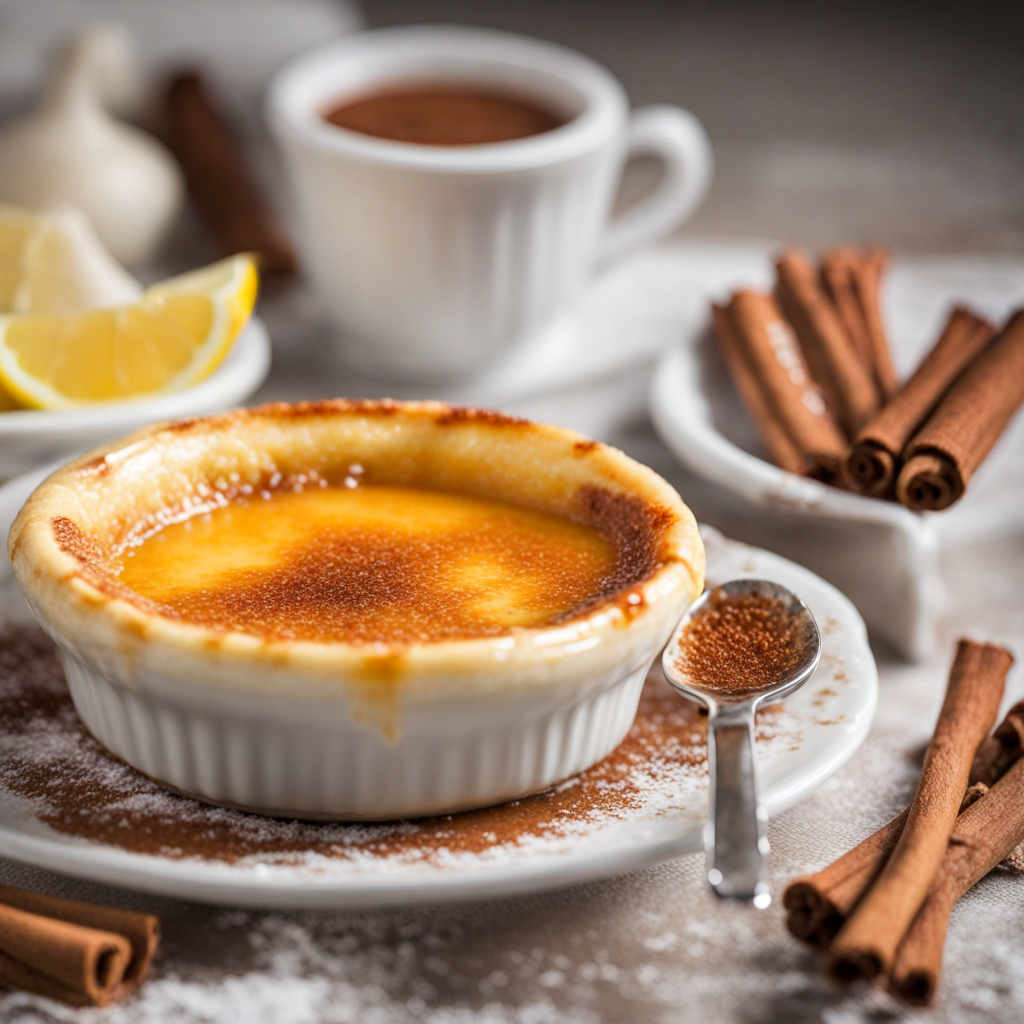Cargols
Cargols, also known as snails, are a beloved delicacy in Andorran cuisine, offering a unique and adventurous taste experience. Typically prepared with a blend of aromatic herbs and spices, these tender mollusks are often cooked in a rich tomato-based sauce, infused with garlic, parsley, and sometimes a hint of chili for a subtle kick. The texture of Cargols is both delicate and slightly chewy, making them a fascinating addition to any meal. When served, they are usually presented in their shells, adding an engaging element to the dining experience as one must extract the succulent meat with a small fork or skewer. The preparation of Cargols is an art form in itself, as the snails are usually sourced fresh and cleaned meticulously to ensure their natural flavors shine through. In Andorra, these snails are often paired with crusty bread, which is perfect for soaking up the delicious sauce. Some variations may include serving them with a side of alioli, a creamy garlic dip that complements the dish beautifully, creating a harmonious balance of flavors that is both rustic and refined. Exploring Cargols is not just about tasting a dish; it’s about experiencing the cultural heritage of Andorra. Enjoyed in local taverns or during festive gatherings, Cargols are often accompanied by a glass of local wine, which enhances the overall flavor profile. The communal aspect of sharing this dish with friends and family adds to its allure, making each bite not just a culinary delight but also a celebration of Andorran traditions and hospitality.
How It Became This Dish
The History of Cargols: Andorra's Culinary Delight Nestled in the heart of the Pyrenees mountains, the tiny principality of Andorra is a land rich in history, culture, and culinary delights. Among its many traditional dishes, cargols, or snails, stand out as a unique and emblematic food that holds significant cultural importance. This dish has evolved over centuries, reflecting the region's agrarian lifestyle, local customs, and even its socio-political history. #### Origins of Cargols The consumption of snails can be traced back to ancient civilizations across Europe, where they were enjoyed as a source of protein and considered a delicacy. In the Iberian Peninsula, snails were consumed by the Romans, who introduced various cooking methods and flavors that influenced the culinary practices of later cultures. The lush, mountainous regions of Andorra provided a favorable environment for the abundance of a particular species of land snail, *Helix aspersa*, which thrived in the moist, temperate climate. In Andorra, the tradition of eating snails likely began as a practical solution to utilizing the natural resources available in the rugged landscape. Historically, the Andorran people were predominantly farmers and shepherds, reliant on what their environment provided. As a result, snails became a staple in the diet, particularly during the spring and summer months when they were most plentiful. #### Cultural Significance Cargols are more than just a dish; they are a symbol of Andorran identity and an important part of the cultural heritage. The preparation and consumption of cargols are often associated with communal gatherings and festive occasions, where families and friends come together to savor this delicacy. In many Andorran households, the process of collecting snails becomes a social activity, often involving children who learn about their local fauna while participating in family traditions. Cargols are typically cooked with a variety of flavors, reflecting the region's culinary influences. One of the most popular preparations is cargols a la llauna, which involves baking the snails in a dish with olive oil, garlic, and herbs. The dish can also be prepared with a spicy tomato sauce, highlighting the influence of Mediterranean flavors. This versatility not only showcases the adaptability of Andorran cuisine but also its ability to incorporate diverse culinary traditions. During the annual Fira de Sant Antoni, a festival held in the winter, cargols take center stage as a highlight of the local gastronomy. Vendors offer various preparations, allowing locals and tourists alike to taste this traditional dish while celebrating Andorran culture. This festival not only reinforces the cultural significance of cargols but also serves as a reminder of the deep-rooted agricultural practices that characterize Andorran life. #### Development Over Time Over the years, the preparation and perception of cargols have undergone notable changes, influenced by globalization, culinary trends, and the evolving tastes of the Andorran populace. While traditional methods of preparation remain cherished, modern chefs have begun to experiment with innovative techniques and flavors, blending traditional Andorran recipes with contemporary culinary practices. In recent decades, the rise of gastronomy tourism has also played a pivotal role in popularizing cargols. As Andorra positions itself as a destination for food enthusiasts, restaurants are increasingly showcasing this dish on their menus, elevating it from a humble staple to a gourmet experience. Chefs often pride themselves on sourcing local ingredients, including the snails themselves, ensuring that each dish reflects the terroir of Andorra. As culinary traditions evolve, the importance of sustainability and ethical sourcing has also influenced the way cargols are collected and prepared. With a growing awareness of environmental concerns, many Andorran chefs and home cooks have adopted practices that prioritize the health of local ecosystems. This shift not only ensures the continued availability of snails but also fosters a deeper connection between the food and its origins. #### Snails in the Broader Context of Andorran Cuisine Cargols, while significant in their own right, also represent a broader narrative within Andorran cuisine. The principality's unique geographical location has resulted in a rich tapestry of culinary influences, blending elements from Spanish, French, and Catalan cuisines. This fusion is evident in the use of fresh herbs, locally-sourced meats, and hearty vegetables that characterize Andorran dishes. Additionally, the mountainous terrain has shaped the agricultural practices in Andorra. The cultivation of ingredients such as potatoes, beans, and wild mushrooms complements the snail dish, showcasing the importance of seasonal and local foods. As Andorrans continue to honor their culinary traditions, they also embrace the principles of farm-to-table dining, honoring the land that has sustained them for generations. #### Conclusion In conclusion, cargols are a culinary treasure of Andorra, embodying the rich history, cultural significance, and evolving nature of Andorran gastronomy. From their ancient origins to their modern interpretations, these snails represent not only a delightful dish but also a connection to the land and community. As Andorra continues to embrace its heritage while welcoming new influences, cargols remain a beloved symbol of the principality's unique culinary identity. Whether enjoyed at a festive gathering or in a fine dining setting, cargols will undoubtedly continue to be a cherished part of Andorran cuisine for years to come.
You may like
Discover local flavors from Andorra


